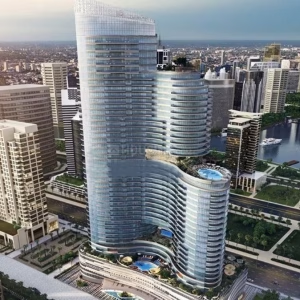If you’ve ever stepped off a plane in the United Arab Emirates during summer, you’ve felt it—that blast of intense, dry heat that defines the UAE climate. As temperatures soar and the sun blazes, it’s natural to wonder: Why is the UAE so hot? From geographic location to unique weather patterns, the intense heat in the UAE can be explained by several factors. Understanding why the region experiences extreme temperatures can offer insights into the climate and how residents and visitors alike can adapt.
Geography: Location Plays a Key Role
One of the primary reasons for the UAE’s high temperatures is its location. Nestled in the northern desert belt, the UAE sits close to the Tropic of Cancer, which exposes it to consistent, direct sunlight for most of the year. This direct solar exposure means that, even in winter, the temperatures rarely drop below mild levels, while summers can be extremely hot, often exceeding 40°C (104°F).
In addition, the UAE is part of the Arabian Peninsula, a large, arid region dominated by desert terrain. The Rub’ al Khali (Empty Quarter) desert, which is one of the hottest and driest places on Earth, lies to the west of the UAE. This vast desert expanse greatly influences the climate, bringing dry, hot air that intensifies temperatures across the peninsula, including the UAE.

Dry Air and Low Humidity Amplify the Heat
Desert climates, by nature, are characterized by low humidity levels, which means there’s little moisture in the air to moderate temperatures. In the UAE, the absence of moisture results in an arid atmosphere where the sun’s heat has a more direct impact, causing temperatures to rise more rapidly than in areas with higher humidity.
However, during certain times of the year, particularly in coastal areas like Dubai and Abu Dhabi, the humidity can spike, creating an intense, uncomfortable combination of heat and humidity. This is due to the proximity of the Persian Gulf, which, despite not cooling the region, introduces moist air that can make the hot weather feel even more oppressive.
Seasonal Winds and Climate Patterns
Another significant factor that contributes to the UAE’s intense heat is the presence of seasonal winds, such as the Shamal winds. These northwesterly winds, common in summer, sweep across the desert and bring with them additional warmth and dry air. They also carry fine dust particles from the desert, which can sometimes lead to hazy or dusty conditions, reducing visibility but doing little to alleviate the temperature.
The UAE also experiences foehn-like winds, which occur when warm, dry air descends from higher altitudes. As this air moves down, it heats up even further, contributing to a sudden rise in temperatures. This combination of local climate factors ensures that the UAE remains one of the hottest places in the world during the summer months.
Global Warming: A Growing Challenge
Global warming has further exacerbated the extreme heat conditions in the UAE. Rising global temperatures mean that countries already experiencing high temperatures, like the UAE, are likely to face more intense and prolonged heatwaves. Studies show that the average temperatures in the UAE have increased over the past few decades, with record highs becoming more frequent. The UAE government has acknowledged these challenges and is actively working to address climate change through sustainability initiatives and efforts to reduce carbon emissions.
How the UAE Adapts to the Heat
Despite the extreme conditions, the UAE has adapted to make living in such a hot climate more manageable. The government has invested heavily in infrastructure that shields residents from the heat, such as air-conditioned public spaces, shopping malls, and modern cooling systems. Buildings are designed to withstand high temperatures, with insulation and materials that help keep indoor spaces cool.
Furthermore, the UAE is a leader in cooling technology and innovation. It has introduced large-scale cooling projects, such as district cooling systems, which supply cool water to buildings for air conditioning, reducing the overall demand on electricity.
Another key adaptation strategy involves lifestyle adjustments. Residents often avoid outdoor activities during peak heat hours, instead choosing to go out early in the morning or late in the evening when temperatures are relatively lower. Public awareness campaigns also advise people on ways to stay safe and hydrated during the summer months.
What the Future Holds
As temperatures continue to rise globally, the UAE is taking proactive steps to ensure that life remains sustainable and comfortable. The country is a pioneer in solar energy, using its abundant sunshine to generate renewable energy. The Mohammed bin Rashid Al Maktoum Solar Park in Dubai, one of the largest solar projects in the world, reflects the UAE’s commitment to harnessing the sun’s power in ways that benefit the environment.
Moreover, the UAE is investing in research and innovation to develop new technologies that can further mitigate the impact of extreme heat. This includes experimenting with artificial rain enhancement, also known as cloud seeding, which has shown some success in increasing rainfall in the arid region. Initiatives like these demonstrate the UAE’s resilience and commitment to adapting to the climate while addressing environmental challenges.
Conclusion: Embracing the Heat with Innovation
The UAE’s unique geographic position, dry climate, and seasonal wind patterns combine to create the extreme heat for which the region is known. But with innovation, infrastructure, and a forward-thinking approach, the UAE is not only coping with these challenges but setting an example for other hot regions around the world.
Understanding why the UAE is so hot helps visitors and residents appreciate the measures taken to create a comfortable environment and enjoy the many benefits the country has to offer. Whether it’s through smart city planning, renewable energy, or advances in cooling technology, the UAE continues to find ways to thrive in the desert heat.
Click here to check UAE STORIES website .
Do follow UAE STORIES instagram .













